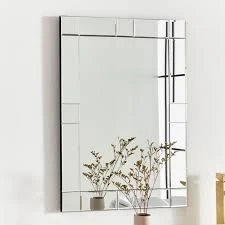

Reflective Glass Material An Innovative Element in Modern Design
Reflective glass material has emerged as a pivotal component in modern architectural and interior design, characterized by its ability to blend aesthetic appeal with functional benefits. This type of glass features a reflective coating that enhances its visual qualities while providing unique advantages in terms of energy efficiency and privacy.
One of the primary uses of reflective glass is in building facades. Architects often favor it for commercial and residential structures alike, as it creates a sleek and contemporary look that can dramatically alter a building’s appearance. The reflective surface can mirror its surroundings, allowing structures to harmonize with their environment. This feature not only enhances visual aesthetics but also contributes to the overall urban landscape, offering a dynamic interplay of light and colors throughout the day.
In addition to its visual benefits, reflective glass material plays a crucial role in energy efficiency. By reflecting sunlight, it reduces the amount of heat entering buildings, thereby decreasing the reliance on air conditioning systems. This is particularly advantageous in regions with hot climates, where energy costs can skyrocket due to cooling demands. By minimizing heat gain, reflective glass not only helps in managing energy consumption but also serves a role in environmental sustainability, making it an attractive choice for eco-conscious builders and designers.

Moreover, the privacy aspect of reflective glass cannot be overlooked. During the day, the glass provides a level of seclusion, preventing outsiders from seeing into the building while still allowing natural light to filter through. This feature is especially beneficial for office buildings and residential spaces located in densely populated areas, where maintaining privacy can be a challenge. However, it's important to note that this reflective quality diminishes at night when interior lights are on, necessitating additional privacy measures such as curtains or blinds.
The versatility of reflective glass extends beyond traditional building applications. It is increasingly being utilized in interior design elements, such as partitions, mirrors, and furnishings. Designers leverage its reflective properties to create a sense of space and light, making small areas appear larger and more open.
In conclusion, reflective glass material is a transformative element in contemporary design, offering a multitude of benefits that range from energy efficiency and aesthetic appeal to privacy solutions. As technology advances, we can anticipate even more innovative applications, solidifying reflective glass’s role as a cornerstone in modern architecture and interior design.